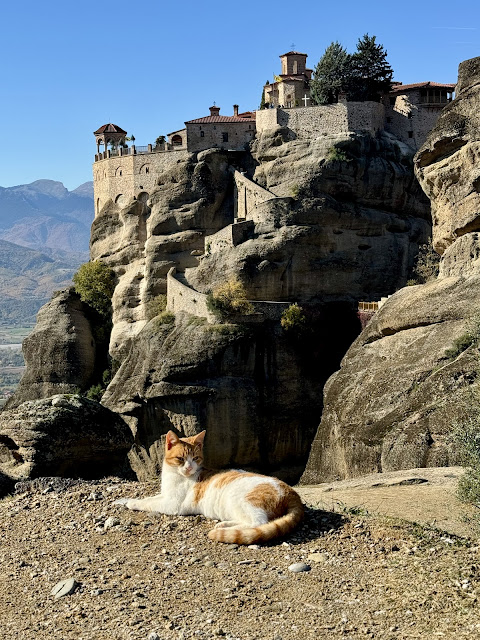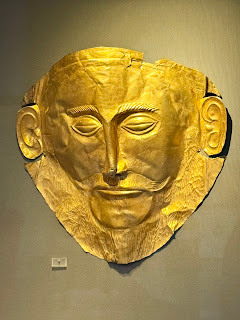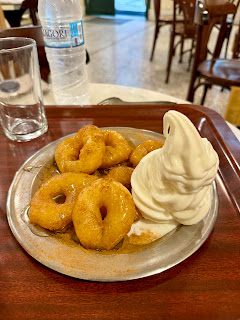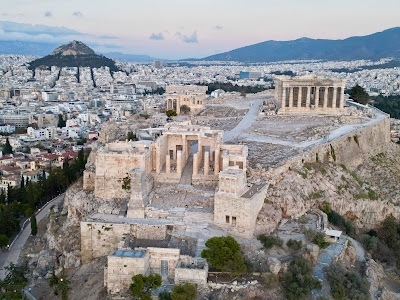Our final island day trip from Athens was to Lesvos. Thank goodness it was our final day of waking up at zero-dark-thirty. Wendy was a geology major at William and Mary, so when she learned that there was a pertrified forest and large national park on Lesvos, that became our top destination. We arrived at 8am, collected our rental car, and drove an hour and a half to the western edge of the island to the petrified forest museum and the national park.
 |
| Still seeing the roots |
In simplest terms, petrification is when organic matter is turned into stone. In the case of Lesvos, this was the result of at least eight separate volcanic eruptions. That is the number of layers they have discovered through excavation. One of the more unique features of the forest is that many of the petrified trees are
in situ, meaning they are still standing in their original position as they were when living. In some instances, you could even see the root structures as well as the trunk of the tree. I've visited pertrified forests in Mississippi and Arizona, and the tree trunks were lying on the ground and not standing.
The largest tree still standing here was a sequoia that was about 25 feet in height. The other remarkable thing is the sheer number of petrified trees. At the other ones I visited, the petrified items were few and far between. Here, you practically tripped over them as you walked. Or as we say in the South, there were too many to shake a stick at.
As we were driving out to the petrified forest, we passed an area with a large number of birds. Wendy checked online as we were driving and it turns out that there are flamingos in the wild on Lesvos and that was likely what we saw. Since we were retracing our steps back east, we hoped that they would still be there. Fortunately for us, they were. Birdwatching in that area was so popular, they constructed bird blinds that we could climb and sit in to observe. It made for a fabulous vantage point to take photos.
After spending time admiring the flamingos, we had an adventurous drive through a village with extremely narrow streets to find a Roman acqueduct that was still standing. Even though I've seen these in other places, I'm still amazed at the ingenuity and longevity of these structures. I was able to fly my drone and catch great pictures.
We stopped at a local taverna for dinner before heading back to the airport. There was a group of locals who we assumed were celebrating something, or maybe just glad it was Friday and the weekend was here. They were playing traditional Greek music and would occasionally start dancing. It was as if we were watching a scene from the movie My Big Fat Greek Wedding.
So I guess the movie was a fairly accurate depiction.

















































